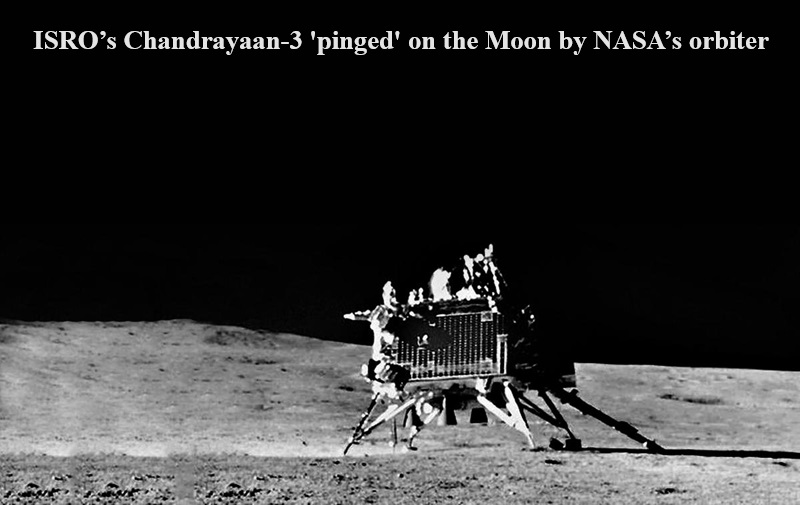
In a noteworthy development, NASA (National Aeronautics and Space Administration) and ISRO (Indian Space Research Organisation) have collaborated on a groundbreaking scientific experiment involving laser communication between an orbiter orbiting the Moon and a device on the surface. Both agencies announced the successful transmission and reflection of a laser beam between NASA’s orbiter and an Oreo-sized device on ISRO’s Vikram lander stationed on the lunar surface.
This collaboration is part of a series of joint space-related scientific endeavors between NASA and ISRO. Currently, NASA has an orbiter in lunar orbit, while ISRO has both an orbiter and a lander named ‘Vikram’ on the Moon’s surface. Vikram’s successful soft landing near the Moon’s south pole marked a significant achievement for India, placing it among the select group of countries with lunar exploration capabilities.
The laser communication experiment involves the utilization of a Laser Retroreflector Array (LRA) fitted on India’s rover. NASA referred to this LRA as the ‘Oreo-sized device’ in its statement. The LRA, created by NASA, is part of the international collaboration and was integrated into the Vikram lander.
NASA’s Lunar Reconnaissance Orbiter (LRO) successfully measured the laser range using the LRA by detecting signals reflected from it on December 12, 2023. The measurement employed the Lunar Orbiter Laser Altimeter (LOLA) on the LRO. Notably, this observation occurred during lunar nighttime, with the LRO ascending to the east of Chandrayaan-3, ISRO reported. The successful experiment opens up new possibilities for precisely locating targets on the Moon’s surface, showcasing the potential of international cooperation in space exploration.

Post Your Comments